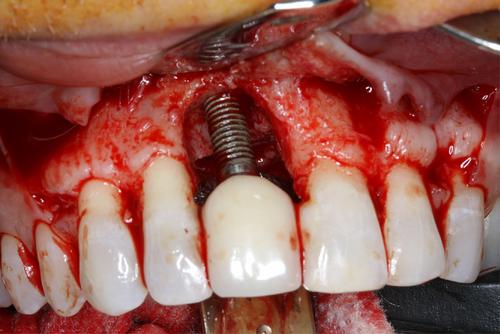Bone construction surgery: A case report using recombinant human platelet-derived growth factor-BB
Abstract
Background
The position and condition of bone largely sets the stage for functional and esthetic implant success. In bone construction surgery, creating a sustainable functional matrix is complex, but necessary, to enable long-term mechanotransduction and maintenance of soft tissue support.
Methods
A patient with a severe peri-implantitis ridge defect in the anterior maxilla underwent bone construction surgery simultaneous with implant removal using a composite bone graft (mineralized freeze dried bone allograft + xenograft) enhanced with recombinant human platelet-derived growth factor (rhPDGF-BB). Space maintenance for bone construct immobility and unimpeded wound healing was ensured via a nonresorbable titanium reinforced polytetrafluoroethylene membrane and an absorbable porcine collagen membrane.
Results
Primary closure was maintained throughout the 6 month healing process at which time implant diagnostics commenced for prosthetically directed implant placement using dynamic navigation and involving soft tissue augmentation. Uncovery was performed 3 months thereafter leading to provisionalization and prosthetic phase completion.
Conclusion
This case report highlights a severe maxillary anterior ridge defect secondary to advanced peri-implantitis in a systemically healthy Caucasian male patient. The surgical outcome success, both clinically and radiographically, underscores the complexities of complete regional anatomy rehabilitation after suffering catastrophic and debilitating bone loss from inflammatory peri-implantitis. Further, it demonstrates the importance of incorporating optimized angiogenetic therapeutics to help establish a vascularized functional bone matrix for implant success.


 求助内容:
求助内容: 应助结果提醒方式:
应助结果提醒方式:


